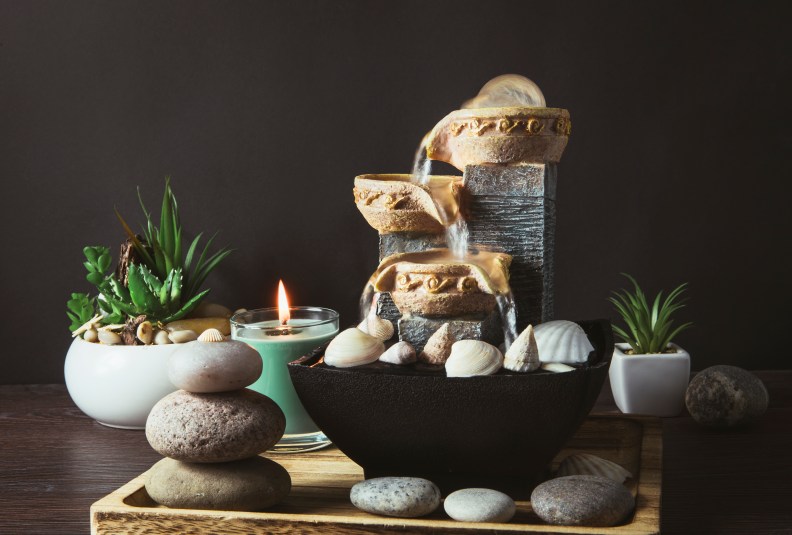8 Feng Shui Tips That Bring Love, Tranquility, And Wealth to the Home

According to the basic precepts of feng shui, the state of your home environment not only reflects your inner life, but it shapes your outer life, too — which means an incorrect fiddle leaf fig placement or the broken elliptical trainer in your success quadrant could be responsible for your disastrous dating record. And so, in the interest of enhancing spiritual and domestic wellness, here’s a careful study of traditional teachings, here’s how to bring feng shui into our modern times.
1. Know your zones.
The bagua is a map of the home’s energy centers and not, as it sounds to contemporary ears, a Swedish brand of collapsible tote bags. Each room and each floor of your home is divided into nine segments, representing money, relationships, creativity, health, and wisdom. Items you place in these areas will either enhance or impede the flow of “chi,” which is life-force energy.
2. Create the home you want to live in.
If you’re looking for love, for example, placing a single chair in your relationship quadrant would be a disastrous misstep that leads to a lifetime of single-serve microwave dinners and futile online dating.
3. Pay attention to furniture placement.
When deciding where to position beds, desks, and other large pieces of furniture, it is important to identify the “commanding position” that will enhance whatever activity you perform there, such as eating, sleeping, or online shopping.
4. Watch where you put your work desk.
Putting your desk under a street-facing window in your home office, for example, not only means your creative energy will flow outside and be wasted, it also means your neighbors will be able to see when you take a break from your workload to spend the afternoon scrolling through Facebook. This will create an overload of bad chi.
5. The same goes for your bed.
The placement of your bed is even more important. Under the principles of feng shui, there is almost no right place to put a bed. Putting your bed under a window, against a wall, on an angle, or placing it so that your feet point out the door or towards a cemetery are all frowned upon.
6. Don’t forget about the elements.
Even though feng shui is as vociferously anti-clutter as Marie Kondo is, every room should contain some representation of the natural elements: water, wood, fire, earth, and metal. This probably means that your aunt, known for her vast collection of knickknacks made from repurposed beach debris, may not be a hoarder so much as a student of the mystic arts.
Generating untold wealth, meanwhile, is a simple question of “Is there running water in my money region?” This could mean anything from an aquarium, a tasteful water feature, or an eight-person jacuzzi with adjoining wet bar. Forgetting to lower the seat makes money drain out of your toilet, say the ancient ones.
7. Inject some color.
Have ample red and gold tones in the house as it’s an extremely fortuitous color that will make the spirits happy. While making sure all the elements are present in each room at the same time can be a bit of a challenge, you can easily proxy the missing elements with an injection of their corresponding colors. Here’s a handy guide to work with:
- Water: Blues and black
- Wood: Green and brown
- Fire: Reds and oranges
- Earth: Pale sandy tones and neutrals
- Metal: White and grays
8. Open wide.
Having a large tree or lamp post blocking your front door is a dangerous concept, according to both feng shui. As a general rule, all good fortune enters through the front door, so having anything obstructing your entryway will have your luck for the year feeling unwelcome.
This article was originally written by Gianni Borrelli. For more, check out our sister site, Homes to Love.
More From FIRST
8 Easy Updates That Make an Old Home Look Like New
14 Air Purifiers That’ll Help You Breathe Better This Allergy Season
14 Fun DIY Projects That Will Give Your Home an Instant Refresh













